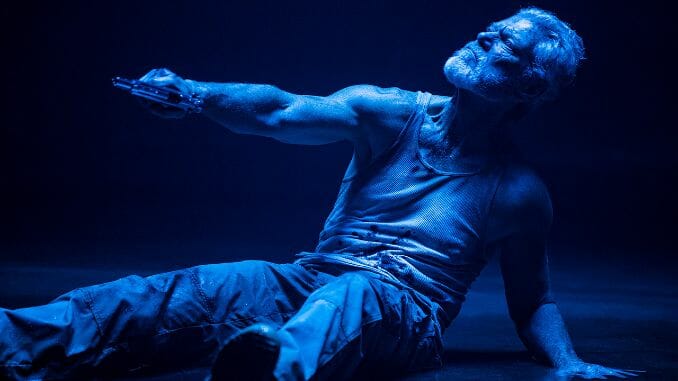Don’t Breathe 2 Fails to Overcome Its Misguided Premise

When the trailer for Don’t Breathe 2, the much anticipated sequel to Fede Álvarez’s tense subversion of the home invasion film, was released, it was met with a lot of resistance. The trailer showed a film that chose to focus on Norman (Stephen Lang), the blind villain of the first film, as the anti-hero and his path to redemption despite his past—which involves using a turkey baster full of semen to forcibly impregnate a woman trapped in his basement. Director Rodo Sayagues and Alvarez, who co-wrote the film, assured audiences that the movie would be more complicated. Well, after seeing Don’t Breathe 2, I can confidently say that this movie is exactly what it looks like: A beautifully shot, hyper-violent and tense film with a morally repulsive story that refuses to acknowledge its main character’s horrific past.
The film begins with a young girl stumbling out of a house fire, then passing out in the street. Eight years later, we learn her name is Phoenix (Madelyn Grace) and she lives with Norman, who kidnapped, raped and impregnated a woman all so he could have a child. Now he has that child and he keeps her locked away, all for himself. He trains her in survival techniques, home schools her and only allows her to go to town once every few months.
But their quiet life is suddenly interrupted when a group of men, led by Raylan (Brendan Sexton III), breaks into their house with the intention of kidnapping Phoenix. Both Norman and Phoenix fight for their lives, quickly maneuvering around the house to hide from the hands—and pistols—of the invaders. While Don’t Breathe subverted home invasion expectations as those who broke in became victims of Norman’s own violence, Don’t Breathe 2 follows a more conventional home invasion plot for the film’s half. It does go off the rails in the final act, but not necessarily in a good way.
This is a redemption story that we didn’t need and barely confronts the events of the first film in a way that feels like we are supposed to forget. In fact, if you didn’t see Don’t Breathe, you’ll still be able to follow this film no problem, and this is a rare circumstance where that’s a bad thing. Without acknowledging that context, the film creates a character that is an anti-hero more than the villain he actually is. Instead, Sayagues and Alvarez focus on creating empathy for Norman. At one point, he’s about to shoot a dog so he can escape, but ultimately decides not to. The sequence is dramatic with slow orchestral music to connote that he does have some sort of conscience, all because he won’t murder a dog. Such a moment is almost comical as you realize that this is why we’re supposed to care about him. There are no moments of introspection that reflect back to the previous film; instead, it feels like he has an unearned blank slate to rebuild trust with the audience.
Norman isn’t the only villain; every character, except for Phoenix, is a nasty dirtbag whose only focus is making money and saving themselves. This group is disgusting and cruel, which makes for phenomenal villains that you can’t wait to see get their comeuppance. But their comeuppance comes at the hands of Norman, who doesn’t ever earn the audience’s trust, empathy or admiration. The film is two groups of bad people trying to kill each other, with a traumatized young girl in the middle watching her life violently unravel.
-

-

-

-

-

-

-

-

-

-

-

-

-

-

-

-

-

-

-

-

-

-

-

-

-

-

-

-

-

-

-

-

-

-

-

-

-

-

-

-








































